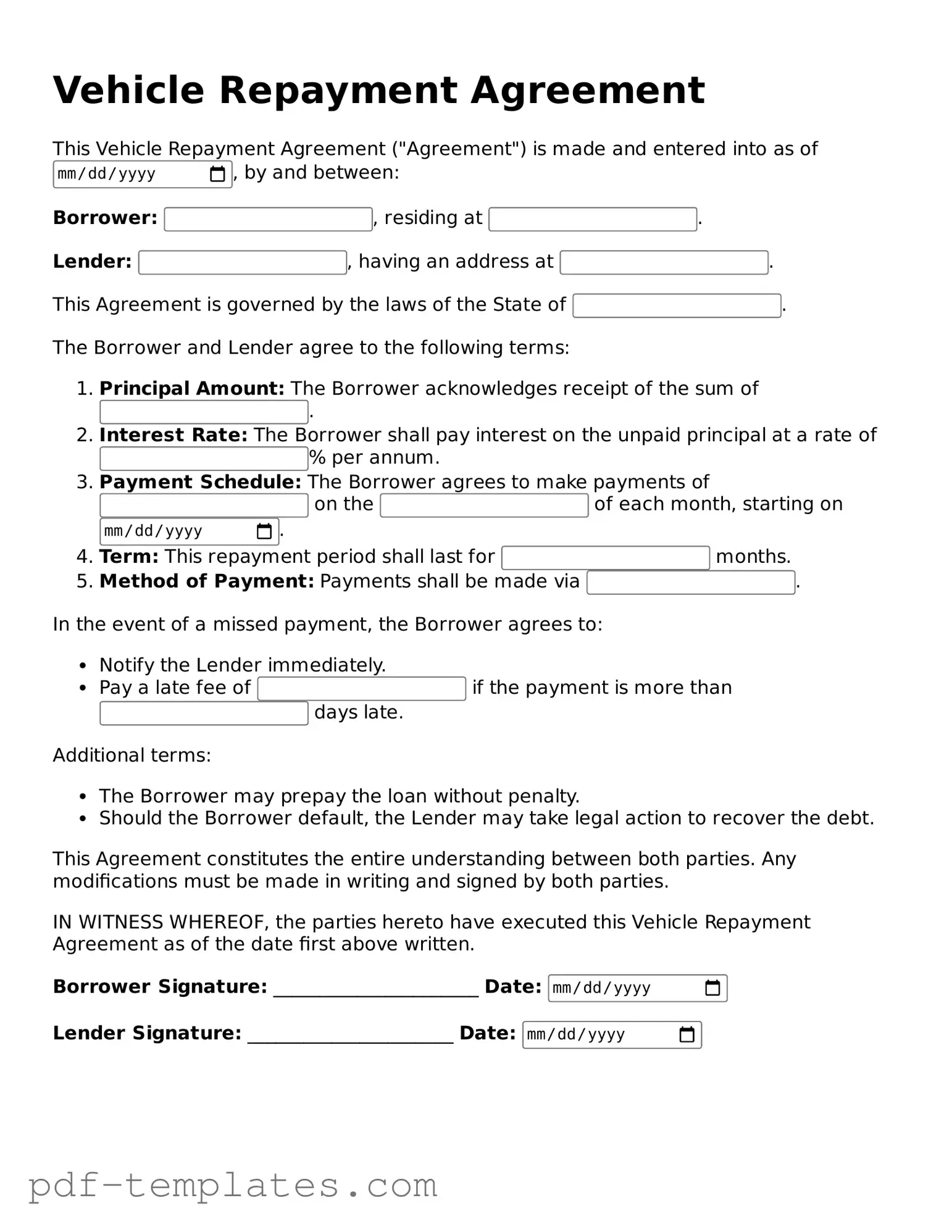The Vehicle Repayment Agreement form is similar to a Loan Agreement. Both documents outline the terms and conditions under which a borrower agrees to repay a loan. They typically include details such as the loan amount, interest rate, repayment schedule, and consequences for defaulting on the agreement. The Loan Agreement provides a comprehensive framework for both parties, ensuring clarity and mutual understanding of the financial obligations involved.
Another document that shares similarities with the Vehicle Repayment Agreement is the Promissory Note. A Promissory Note serves as a written promise to pay a specific sum of money to another party. Like the Vehicle Repayment Agreement, it includes key details such as the amount owed, payment terms, and interest rates. Both documents are legally binding and serve to protect the rights of the lender while outlining the responsibilities of the borrower.
The Retail Installment Sales Contract is also akin to the Vehicle Repayment Agreement. This contract is commonly used in the sale of vehicles, detailing the terms of the sale and financing. It includes information about the purchase price, down payment, interest rates, and payment schedule. Both documents aim to formalize the financial relationship between the buyer and seller, ensuring that all parties are aware of their obligations.
When considering membership in a sorority, it's crucial to provide a comprehensive and compelling overview of the applicant, which can be effectively achieved through a Sorority Recommendation Letter. This document not only highlights the individual’s accomplishments and character but also serves to strengthen her application. For those requiring guidance on how to compose such a letter, resources like OnlineLawDocs.com can be immensely helpful.
A Lease Agreement can be compared to the Vehicle Repayment Agreement in that both involve a financial commitment for the use of an asset. While a Lease Agreement typically pertains to renting property or equipment, it shares similar components, such as payment terms, duration, and responsibilities for maintenance. Both agreements serve to protect the interests of the parties involved and clarify the expectations of use and payment.
The Security Agreement is another document that bears resemblance to the Vehicle Repayment Agreement. This document is often used when a borrower pledges collateral to secure a loan. It outlines the rights of the lender in case of default, including the ability to repossess the collateral. Like the Vehicle Repayment Agreement, it establishes clear terms regarding the repayment of the loan and the consequences of failing to meet those terms.
The Installment Payment Agreement is similar in nature to the Vehicle Repayment Agreement as it lays out the terms under which a borrower agrees to make payments over time. This document specifies the amount of each installment, payment frequency, and total loan amount. Both agreements aim to provide a structured repayment plan, ensuring that borrowers understand their obligations and lenders can anticipate cash flow.
Lastly, the Loan Modification Agreement shares characteristics with the Vehicle Repayment Agreement. This document is used when the original terms of a loan need to be altered, often due to the borrower's financial circumstances. It outlines the new payment terms and any changes to interest rates or repayment schedules. Both agreements are designed to ensure that the borrower can continue to meet their obligations while providing the lender with a clear understanding of the modified terms.
